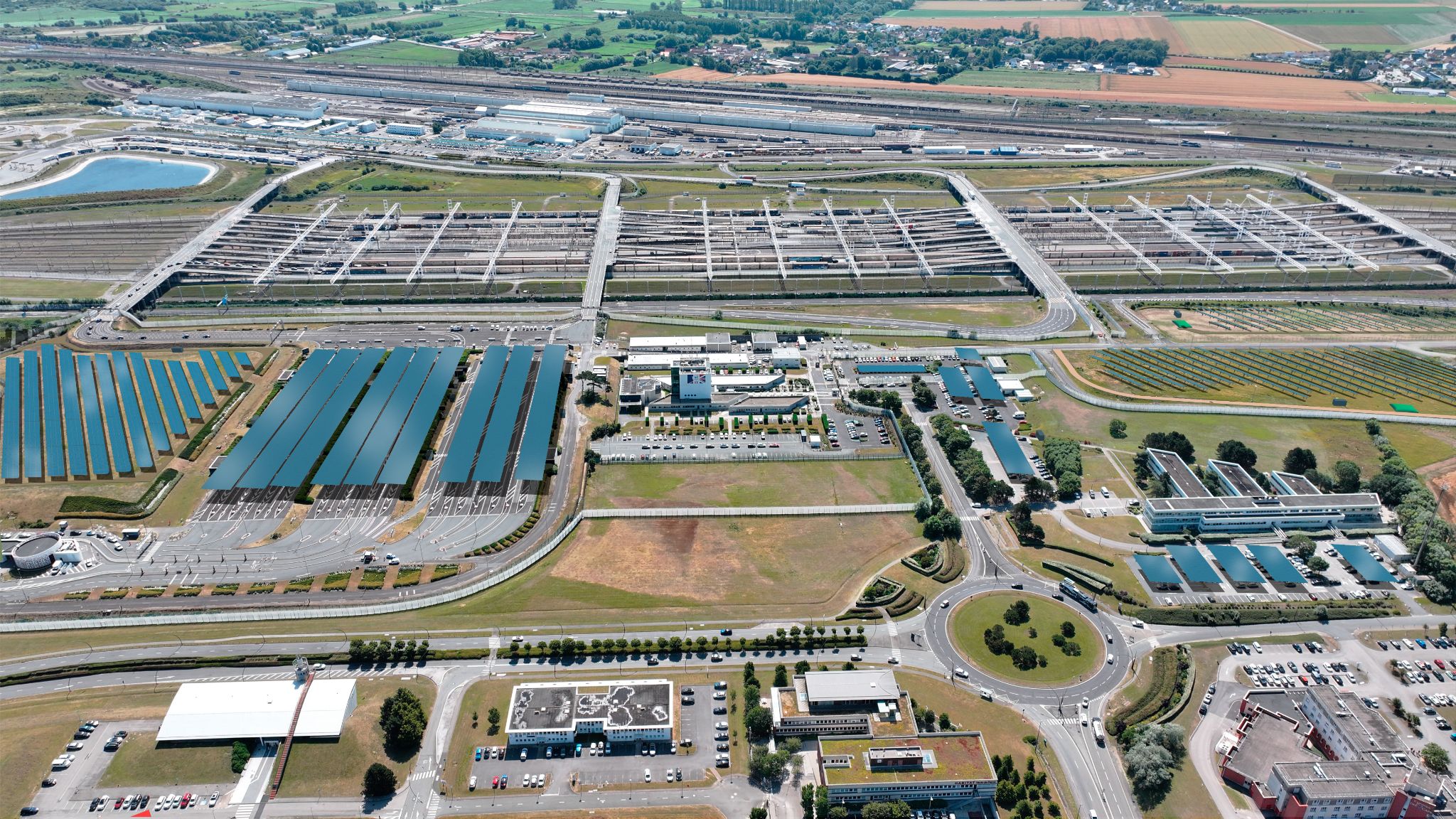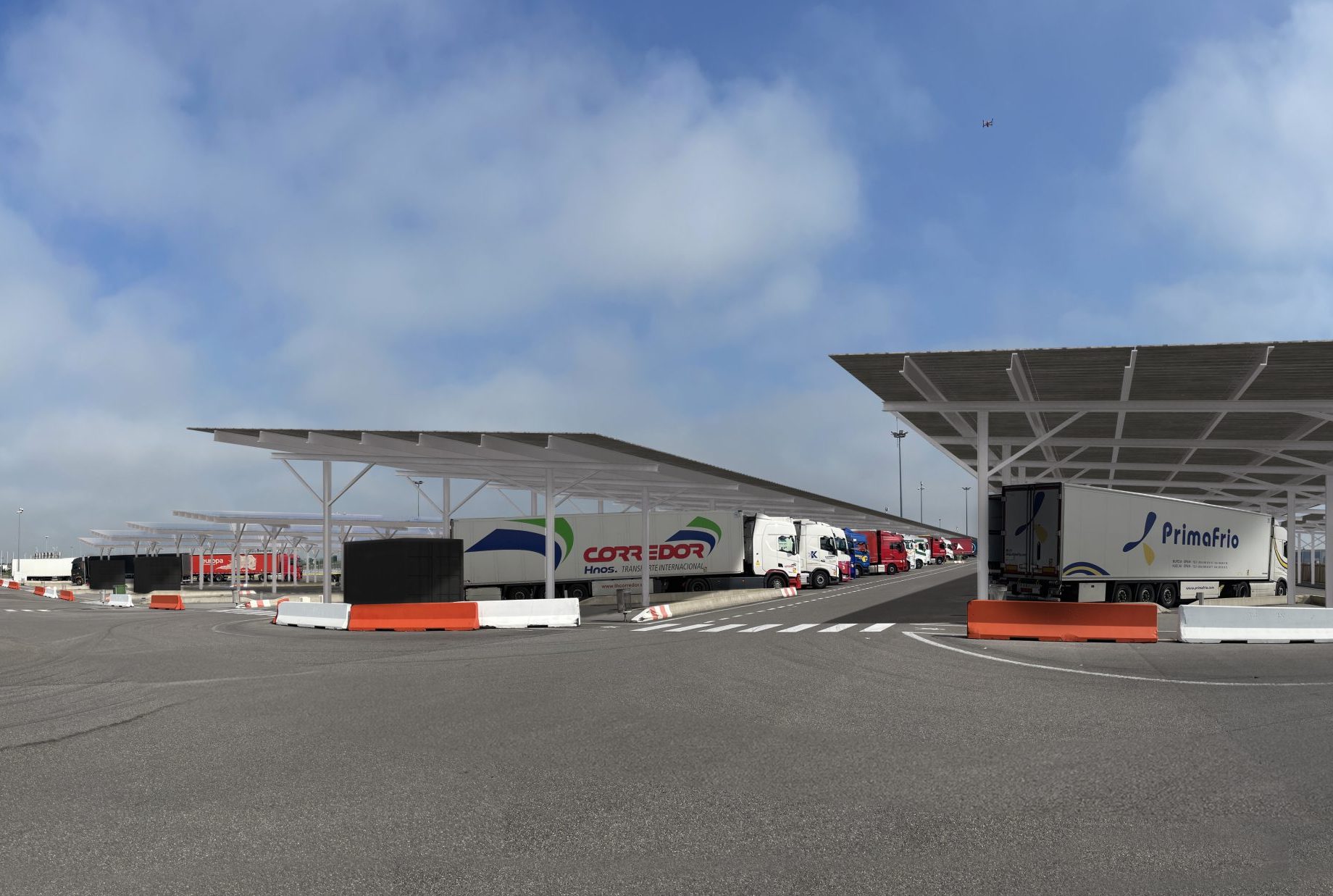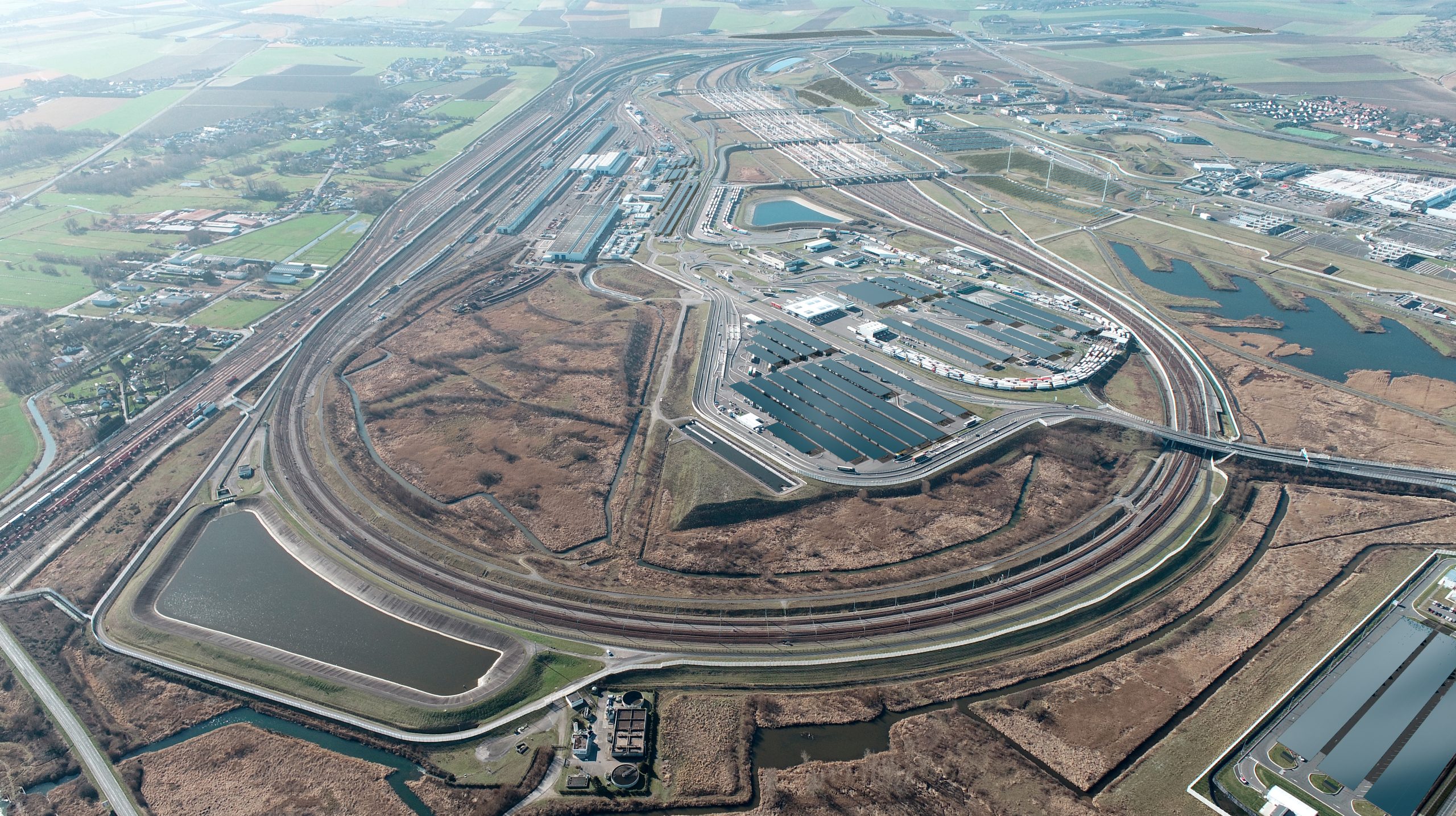Eurotunnel launches an unprecedented solar programme to cover 12% of its electricity needs with locally produced decarbonised energy
The trains running through the Channel Tunnel will be partially powered by solar energy.
A world first
Eurotunnel, a subsidiary of the Getlink Group and concessionaire of the Channel Tunnel until 2086, has announced the launch of an ambitious solar energy production programme at its Coquelles terminal. This project aims to cover up to 12% of the site’s electricity consumption from 2028 and will directly power the catenaries of the two rail tunnels under the Channel.
A technological innovation for the development of low-carbon transport: “power to traction”
At the heart of the project lies a technological innovation: the “power to traction” system, which will allow the direct injection of solar electricity into the railway network, bypassing the public grid. Thanks to this technology developed in-house by Eurotunnel, trains running through the Channel Tunnel will be powered by solar energy. A world first in the field of energy applied to rail transport.

Architectural photograph illustrating the future installation of solar panels on the Coquelles terminal
A large-scale solar infrastructure
The programme provides for the installation of 80,000 photovoltaic panels spread over 55 hectares at Eurotunnel’s French terminal.
These panels will be deployed on the ground and as car park canopies, with a total capacity of 48 MWp, representing an estimated annual production of 48 GWh.

Architectural photograph of future car park canopies installed at the Coquelles terminal
A structuring project for the region
With an investment estimated at 50 million euros, this project is part of a decarbonisation and regional development approach in the Pas-de-Calais area. The construction site will involve up to 200 people over a period of 24 to 30 months, in collaboration with local economic stakeholders. The first installations are scheduled for July 2026, with progressive commissioning between 2027 and 2028.

Architectural photograph illustrating the future installation of solar panels on the Coquelles terminal
A new illustration of Getlink’s low carbon positioning
This programme is fully aligned with Getlink’s strategy to reduce the carbon footprint of its activities while modernising its infrastructure. With an initial operating life of 30 years, this solar power plant marks a decisive step towards more sustainable rail transport. It will contribute to the Group’s ambition to achieve carbon neutrality by 2050, with an intermediate target of a 54% reduction in GHG emissions by 2030 (compared to 2019, the reference year).



